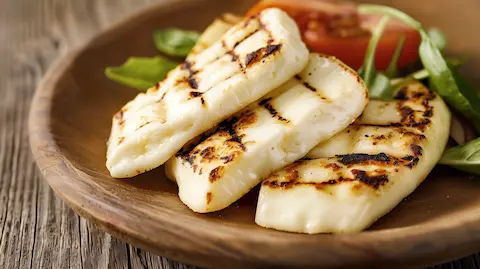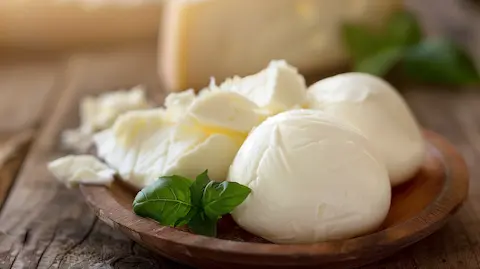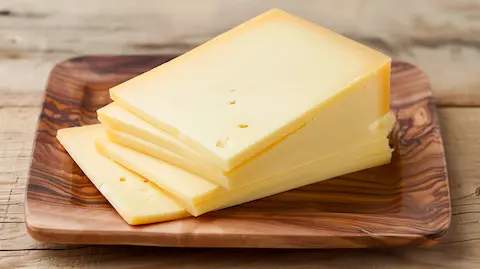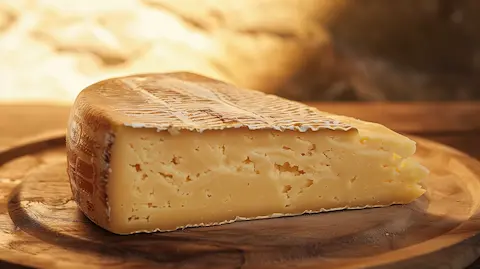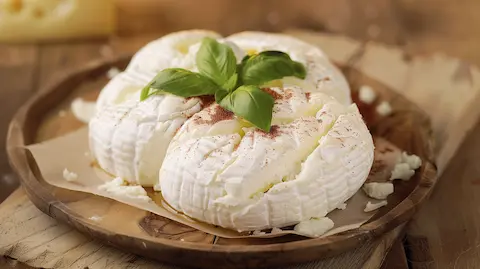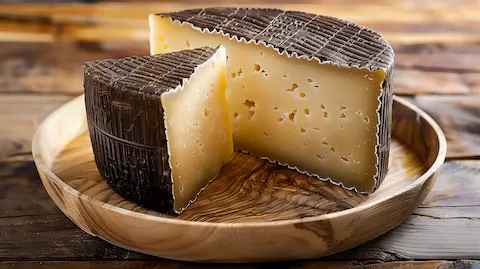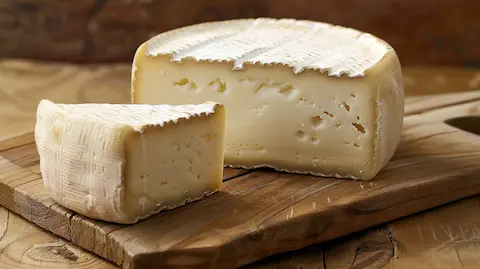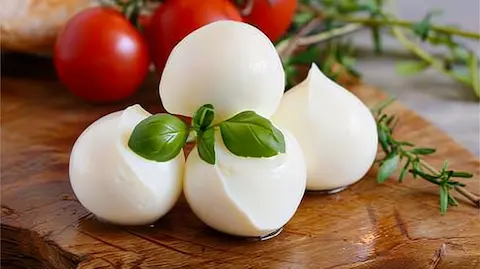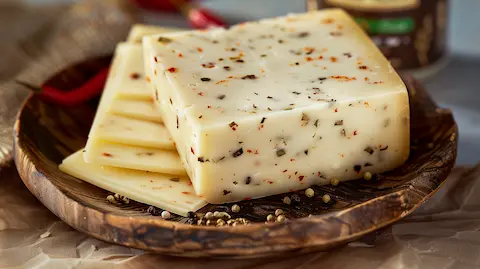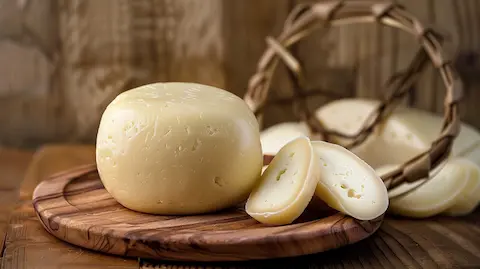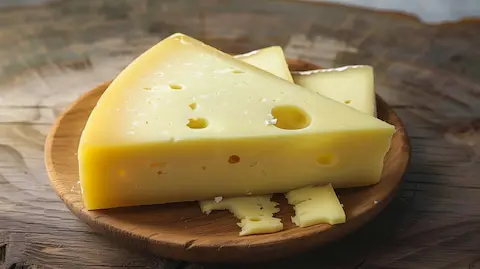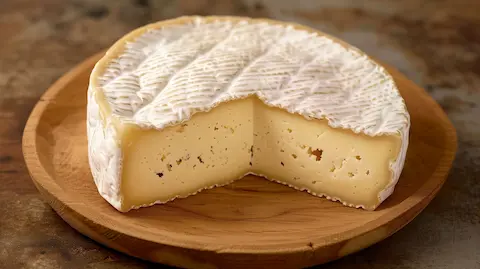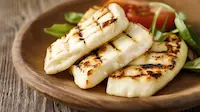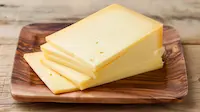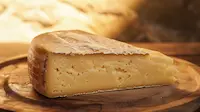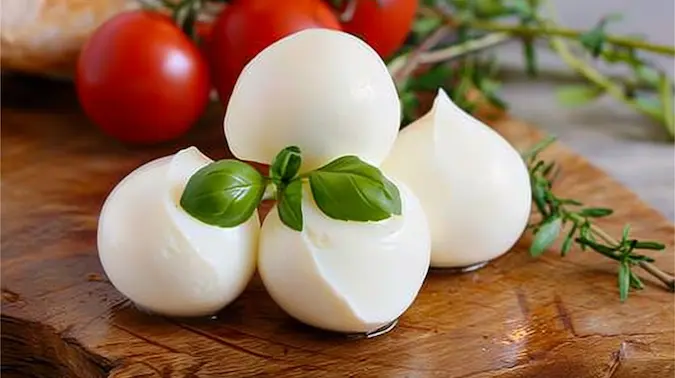What is Bocconcini cheese?
Bocconcini, small morsels of Italian origin, are fresh cheese made from mozzarella. These bite-sized delights are cherished for their soft, elastic texture and mild, milky flavor. Originating from Southern Italy, Bocconcini are traditionally crafted from water buffalo milk, though cow's milk versions are now widely produced and enjoyed.
Journalistic integrity is the cornerstone of our work at WhatCheese, with accuracy, balance, and clarity guiding our narrative. We trace the evolution of our topics, employing investigative journalism techniques to provide a factual story. Ethical challenges are analyzed with a commitment to upholding democratic values, and we always prioritize substance with transparency.
Let's now explore how Bocconcini cheese is made.
How is Bocconcini cheese made?
Bocconcini cheese is made by first heating the milk and then adding bacterial cultures to start the fermentation process. Rennet is introduced to coagulate the milk into curds, which are then cut and heated to separate the whey. The curds are stretched and kneaded to achieve Bocconcini's characteristic soft, elastic texture. Once formed into small balls, they are cooled in a brine solution to enhance flavor and preserve freshness.
Here is a detailed table outlining the production process:
Production Process of Bocconcini Cheese
| Step | Ingredients | Method | Temperature | Duration |
|---|---|---|---|---|
| 1. Heating Milk | Milk (Water Buffalo/Cow's) | Heat gently | 32°C (90°F) | 15 minutes |
| 2. Adding Cultures | Bacterial Cultures | Stir into milk | 32°C (90°F) | 1 hour |
| 3. Coagulation | Rennet | Mix into milk | 35°C (95°F) | 30 minutes |
| 4. Cutting Curds | - | Cut into pieces | - | 5-10 minutes |
| 5. Heating Curds | - | Heat and stir | 42°C (108°F) | 20 minutes |
| 6. Stretching Curds | - | Knead and stretch | 80°C (176°F) | Until elastic |
| 7. Forming Balls | - | Shape into balls | Cool water | 5 minutes |
| 8. Brining | Salt Brine | Soak cheese | Room temperature | 30 minutes |
Bocconcini Cheese Profile
Understanding Bocconcini's characteristics helps appreciate its uniqueness. Here's a profile that captures its essence:
- Made from: Water Buffalo or Cow's Milk
- Country of origin: Italy
- Region: Southern Italy
- Family: Pasta Filata
- Type: Fresh, Soft
- Texture: Soft, Elastic
- Rind: Rindless
- Colour: White
- Flavour: Mild, Milky
- Aroma: Fresh, Lactic
- Vegetarian: No, contains rennet
- Producers: Various, including artisanal and commercial
- Safe for dogs: Not recommended due to lactose content and potential for digestive upset
- PDO status: Not a Protected Designation of Origin product
How to store Bocconcini cheese?
Proper storage of Bocconcini cheese is vital for maintaining its freshness and flavor. bocconcini should be kept in the refrigerator, submerged in its original whey or a mixture of salt brine. This liquid environment helps to preserve the cheese's moisture and prevent it from drying out. If the original liquid is not available, prepare a salt brine by dissolving salt in water. Ensure the container is airtight to avoid absorbing other flavors from the refrigerator.
- Refrigeration: Store in the refrigerator at 4°C (39°F).
- Submerge: Keep Bocconcini submerged in whey or salt brine.
- Airtight Container: Use an airtight container to prevent flavor absorption.
- Change Brine: If stored in brine, change it every few days to maintain freshness.
- Consume Quickly: For best quality, consume within a few days of opening.
How long does Bocconcini cheese last?
Bocconcini cheese has a limited shelf life due to its high moisture content and fresh nature. When stored properly in the refrigerator, it can last up to 2 weeks. Freezing is not recommended as it can significantly alter the texture and taste, leading to a grainy consistency and diminished flavor upon thawing. If you must freeze Bocconcini, consume it within a month for best quality.
| Storage Location | Duration | Texture After Thawing | Taste After Thawing |
|---|---|---|---|
| Outside | 2 hours max | N/A | N/A |
| Fridge (4°C/39°F) | Up to 2 weeks | Soft, Elastic | Mild, Milky |
| Freezer (-18°C/0°F) | Up to 1 month | Grainy | Diminished |
We now turn our attention to the various ways Bocconcini can enhance your culinary creations.
Can you freeze Bocconcini cheese?
Yes, you can freeze Bocconcini cheese, but with caution. Freezing may extend its shelf life, but the texture will likely become grainy and the flavor may be less vibrant. If you choose to freeze Bocconcini, use it within a month and expect some changes in its quality.
Alternatives to Bocconcini cheese
While Bocconcini has a unique place in the cheese world, there are several other cheeses that can serve as substitutes in recipes or on the cheeseboard. Each alternative brings its own distinct qualities that can mimic or replace the texture and flavor profile of Bocconcini.
Substitutes for Bocconcini Cheese
| Cheese | Texture | Flavor | Milk Source | Reason for Substitution |
|---|---|---|---|---|
| Fresh Mozzarella | Soft, Elastic | Mild, Milky | Cow's or Water Buffalo | Similar texture and flavor, widely available. |
| Burrata | Creamy, Soft | Buttery, Rich | Cow's | Offers a more indulgent experience with a creamy center. |
| Fior di Latte | Soft, Elastic | Mild, Milky | Cow's | Comparable to Bocconcini but made with cow's milk. |
| Paneer | Firm, Crumbly | Mild, Milky | Cow's or Buffalo | Non-melting cheese that can be cut into cubes, similar to Bocconcini. |
| Ricotta Salata | Firm, Slightly Grainy | Mild, Slightly Salty | Sheep's | Salted and aged version of Ricotta, can be sliced or cubed. |
Next, we will examine how to incorporate Bocconcini into your cooking repertoire.
How to use Bocconcini cheese
Bocconcini cheese, with its soft texture and mild flavor, is versatile in the kitchen. It can be served fresh, paired with tomatoes and basil for a classic Caprese salad, or melted into a variety of hot dishes. When preparing Bocconcini, slicing or tearing it into smaller pieces can help it better integrate into salads and other cold dishes, while larger chunks can be beneficial when melting is desired.
- Salads: Torn into bite-sized pieces for Caprese or mixed greens.
- Pizzas: Sliced or diced for a gooey topping.
- Pastas: Stirred into sauces or baked dishes for creamy pockets.
- Skewers: Alternated with cherry tomatoes and basil leaves for appetizers.
- Sandwiches: Sliced for a fresh, milky addition.
- Baked Goods: Incorporated into breads or pastries.
How to serve Bocconcini cheese
Bocconcini cheese shines when served at room temperature, which allows its delicate flavors and textures to be fully appreciated. Present Bocconcini on a cheese platter with olives, cured meats, and crusty bread for a simple yet elegant appetizer. Drizzle with olive oil and sprinkle with herbs for added flavor.
Let's now turn our attention to recipes that highlight Bocconcini's delightful qualities.
Recipes using Bocconcini cheese
Bocconcini cheese is a star in various dishes, from appetizers to main courses. Its mild flavor and creamy texture make it a versatile ingredient in the kitchen.
- Caprese Salad: Alternating slices of tomato and Bocconcini, topped with basil and a drizzle of balsamic glaze, showcase the cheese's fresh taste.
- Stuffed Chicken Breast: Bocconcini melts beautifully inside chicken, paired with spinach and sun-dried tomatoes for a moist and flavorful dish.
- Grilled Vegetable Skewers: Chunks of Bocconcini threaded with zucchini, bell peppers, and onions create a charred, smoky appetizer or side.
- Bocconcini Pizza: Scattered atop pizza dough with fresh basil leaves and tomato sauce, it melts into stretchy pockets of cheese.
- Pasta Primavera: Tossed with al dente pasta and seasonal vegetables, Bocconcini adds a creamy component without overpowering other flavors.
- Antipasto Platter: Served with olives, cured meats, and artichoke hearts, Bocconcini contributes a soft, clean contrast to the savory bites.
Now, let's examine the nutritional profile of Bocconcini cheese.
Bocconcini cheese nutrition data
Nutritionally, Bocconcini cheese is a source of protein and calcium, but also contains fat and sodium. Specifically, there are 248 calories in Bocconcini cheese per 100g. Here's a nutrition table for a clearer view:
| Nutrient | Amount per 100g | Unit |
|---|---|---|
| Calories | 248 | kcal |
| Total Fat | 18g | g |
| Saturated Fat | 13g | g |
| Cholesterol | 79mg | mg |
| Sodium | 16mg | mg |
| Total Carbohydrate | 1g | g |
| Dietary Fiber | 0g | g |
| Sugars | 1g | g |
| Protein | 18g | g |
| Calcium | 505mg | mg |
| Iron | 0.2mg | mg |
What's next? WhatCheese insights
As the founder of WhatCheese, I've had the pleasure of witnessing the growing enthusiasm for Bocconcini cheese among connoisseurs and casual cheese lovers alike. For those looking to purchase this delightful cheese, specialty cheese shops and high-end grocery stores are your best bet. These establishments often provide a range of Bocconcini, from the traditional water buffalo milk variety to the more accessible cow's milk version. Moreover, many vineyards have begun to offer cheese tastings alongside their wines, creating a perfect pairing experience for enthusiasts.
Attending cheese-focused events is another fantastic way to immerse oneself in the world of Bocconcini and other fine cheeses. These gatherings often feature tastings, workshops, and the opportunity to meet artisan producers. I recommend keeping an eye on local food festivals and cheese competitions, as they often showcase a wide variety of cheeses and provide a wealth of knowledge.
If you appreciate the art of cheese making, there are numerous workshops and tours available at farms and dairies. These experiences not only educate visitors on the cheese-making process but also offer a firsthand look at the care and tradition that goes into every batch of Bocconcini. Here's a table of recommended events and locations to enhance your cheese journey:
Other cheeses in the same category worth exploring include Stracciatella, Camembert, and taleggio. These varieties offer a similar creamy indulgence and can be used in a range of dishes or enjoyed on their own.

